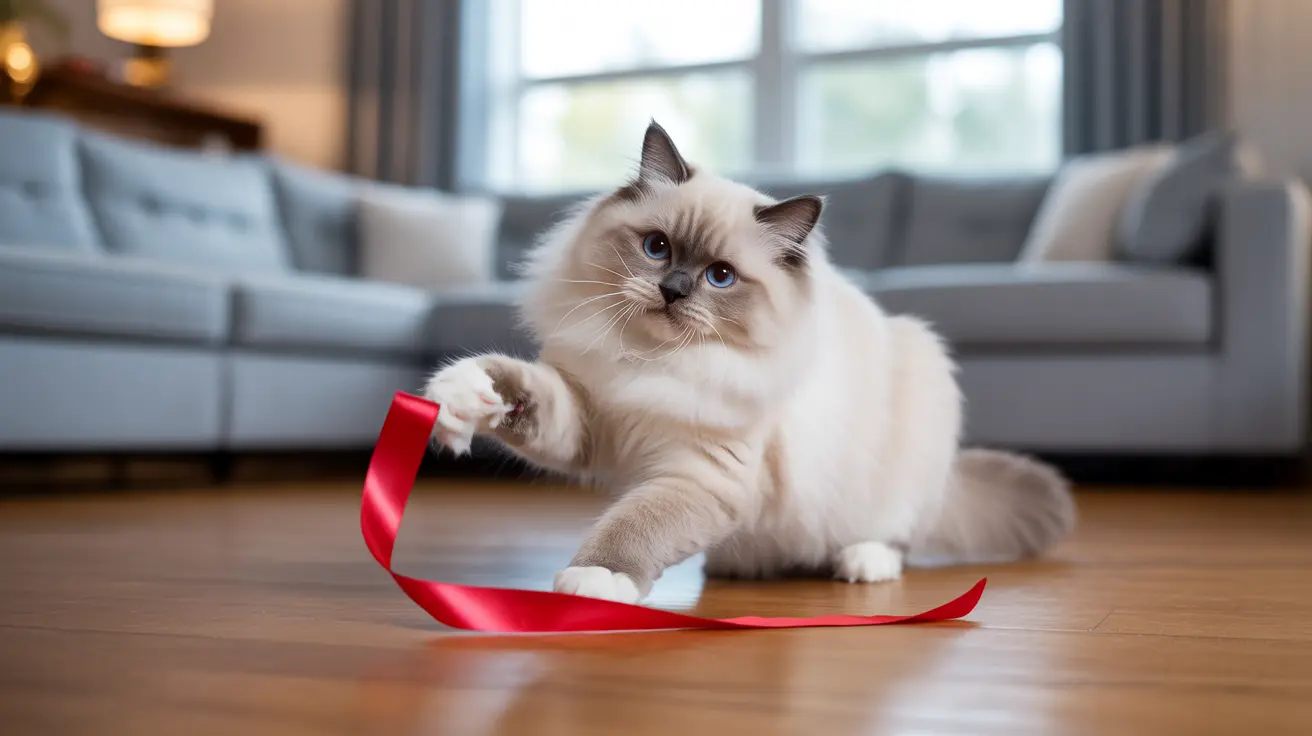Understanding Why Cats Eat Ribbons
Cats are naturally drawn to ribbons and similar linear objects due to their predatory instincts. The movement and texture of ribbons mimic prey, making them irresistible to many cats, especially younger ones. This natural attraction, combined with their rough tongues that make it difficult to stop swallowing once they start, creates a dangerous situation.
The Dangers of Ribbon Ingestion
When a cat swallows a ribbon, it can become what veterinarians call a "linear foreign body." This type of obstruction is particularly dangerous because one end of the ribbon often becomes anchored while the rest continues moving through the digestive tract.
As the intestines attempt to move the ribbon through, they can become bunched up like an accordion. This can lead to:
- Severe internal lacerations
- Intestinal perforation
- Life-threatening infection
- Complete gastrointestinal blockage
- Potential organ failure if left untreated
Recognizing Emergency Signs
Watch for these critical warning signs that indicate your cat needs immediate veterinary care:
- Repeated vomiting or dry heaving
- Loss of appetite
- Lethargy or depression
- Abdominal pain or swelling
- Visible ribbon protruding from mouth or anus
- Straining to defecate
- Drooling excessively
- Unusual hiding behavior
Immediate Actions to Take
If you suspect or know your cat has swallowed a ribbon:
- Don't pull on any visible ribbon
- Contact your veterinarian immediately
- Monitor your cat closely
- Keep them calm and comfortable
- Transport them to the vet safely
Treatment Options and Recovery
Treatment depends on the severity of the situation and may include:
- Emergency surgery to remove the ribbon
- Endoscopic removal if possible
- Supportive care with IV fluids
- Pain management
- Antibiotics if infection is present
Recovery time varies but typically ranges from a few days to several weeks, depending on whether surgery was necessary.
Prevention Strategies
Protect your cat by implementing these safety measures:
- Store ribbons, string, and similar items securely
- Supervise play with any string-like toys
- Choose cat-specific toys designed for safety
- Regular home inspections for potentially dangerous items
- Create enriching environments with safe alternatives
Frequently Asked Questions
What should I do immediately if my cat ate a ribbon or string?
Contact your veterinarian immediately. Don't pull on any visible ribbon, as this could cause severe internal damage. Monitor your cat closely and seek emergency care if any concerning symptoms develop.
What are the warning signs that my cat has ingested ribbon and needs urgent veterinary care?
Watch for vomiting, lethargy, loss of appetite, abdominal pain, drooling, or straining to defecate. Any visible ribbon protruding from the mouth or anus is an emergency requiring immediate veterinary attention.
Can a cat safely pass a swallowed ribbon on its own, or is surgery usually required?
While some cats might pass small pieces naturally, it's never safe to wait and see. The risks of severe complications are too high, and professional veterinary assessment is always necessary to determine the safest course of action.
Why are ribbons and similar linear objects so dangerous to cats compared to other toys?
Linear objects can create a "sawing" effect in the intestines, potentially causing severe internal damage and obstruction. Their length and tendency to anchor at one end while moving through the digestive system makes them particularly hazardous.
How can I prevent my cat from swallowing ribbons, strings, or tinsel during playtime?
Store all ribbons, strings, and similar items securely out of reach. Use only cat-specific toys designed for safety, and always supervise playtime. Create an enriching environment with appropriate toys to prevent boredom-related chewing behaviors.
Remember, prevention is always better than treatment. Keep your home safe for your feline friend by being vigilant about potential hazards and providing appropriate alternatives for play and enrichment.






